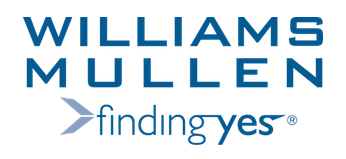Contact: Williams Mullen (North Carolina & Virigina, USA)
WILLIAM J. BENOS & REBA MENDOZA
At this time, most are well-aware that the H-1B cap for the 2013 fiscal year was reached on June 11, 2012. [1] The brevity of this cap season, only two and one-half months,
is a change from recent years,[2] and it has left employers and immigrant workers searching for alternative immigration strategies that will enable these workers to continue their authorized employment in the United States. The STEM OPT extension is an attractive option for both recent graduates and their employers, particularly in the wake of E-Verify regulations that increasingly mandate employer participation in the E-Verify program. The STEM OPT extension allows qualified graduates to work for employers who participate in the E-Verify program for up to seventeen (17) months; thereby, enabling these graduates to continue working in the United States until H-1B visas are again available in April 2013.[3]
To be eligible for the STEM OPT extension, the applicant must have a STEM degree in a field included in the STEM Designated Degree Progam List. The individual must also have received post-completion practical training employment authorization (“post-completion OPT”) related to such degree, and he or she must be employed by an employer who participates in the E-Verify program.
A STEM degree is a degree in science, technology, engineering, or mathematics. To be eligible for the STEM OPT extension, the employee must have a STEM degree, and this STEM degree must be included in the STEM Designated Degree Program list. Examples of degrees included in this list are biochemistry, urban forestry, and immunology. A complete list of these degrees can be found on the Immigration and Customs Enforcement (“ICE”) website at http://www.ice.gov/sevis/stemlist.htm.
Moreover, the worker must have received a post-completion OPT. A post-completion OPT allows a foreign student who completes a course of study at a U.S. educational institution to work for a U.S. employer and receive practical training related to his or her degree for a period up to twelve (12) months. Notably, to be eligible for the STEM OPT extension, the employee’s current post-completion OPT must be based on the employee’s receipt of a STEM degree.
Finally, the individual must work for an employer who participates in the E-Verify program. E-Verify is a free Internet-based system that allows businesses to determine the eligibility of their employees to work in the United States. E-Verify compares information from an employee's Form I-9, Employment Eligibility Verification, to data from U.S. Department of Homeland Security and Social Security Administration records to confirm employment eligibility. Notably, many employers are currently required to participate in E-Verify. Pursuant to federal law, employers who enter into contracts with the federal government are required to participate in the E-Verify Program. Moreover, states are also adopting regulations that make participation in E-Verify mandatory. In 2011 alone, twelve states addressed E-Verify: eleven states through legislation and one state (Florida) through an executive order. At this time, the majority of this legislation addresses state contractors. However, several states require private employers to both register and use the E-Verify system.
Overall, the STEM OPT extension is an excellent option for employers and qualified foreign workers seeking short-term alternatives to the H-1B visa. This is particularly true for employers currently subject to mandatory E-Verify participation. Indeed, for these employers, part of the work is already done.
[1] The H-1B visa is numerically limited; only 65,000 such visas are available each fiscal year. This limitation is referred to as the H-1B cap.
[2] For the 2012 fiscal year, the H-1B cap period was five (5) months, when it ended on November 23, 2011.
[3] Typically, USCIS accepts H-1B visa petitions for the next fiscal year starting April 1st. So, we can assume that the H-1B visa 2014 filing season begins April 1, 2013.
For more information about this topic or other immigration related matters, please contact the authors or any member of the Williams Mullen Immigration Group.
|
Please note: This newsletter contains general, condensed summaries of actual legal matters, statutes and opinions for information purposes. It is not meant to be and should not be construed as legal advice. Readers with particular needs on specific issues should retain the services of competent counsel. For more information, please visit our website at www.williamsmullen.com or contact William J. Benos, 804.420.6402 or bbenos@williamsmullen.com. For mailing list inquiries or to be removed from this mailing list, please contact Julie Layne at jlayne@williamsmullen.com or 804.420.6311. |









